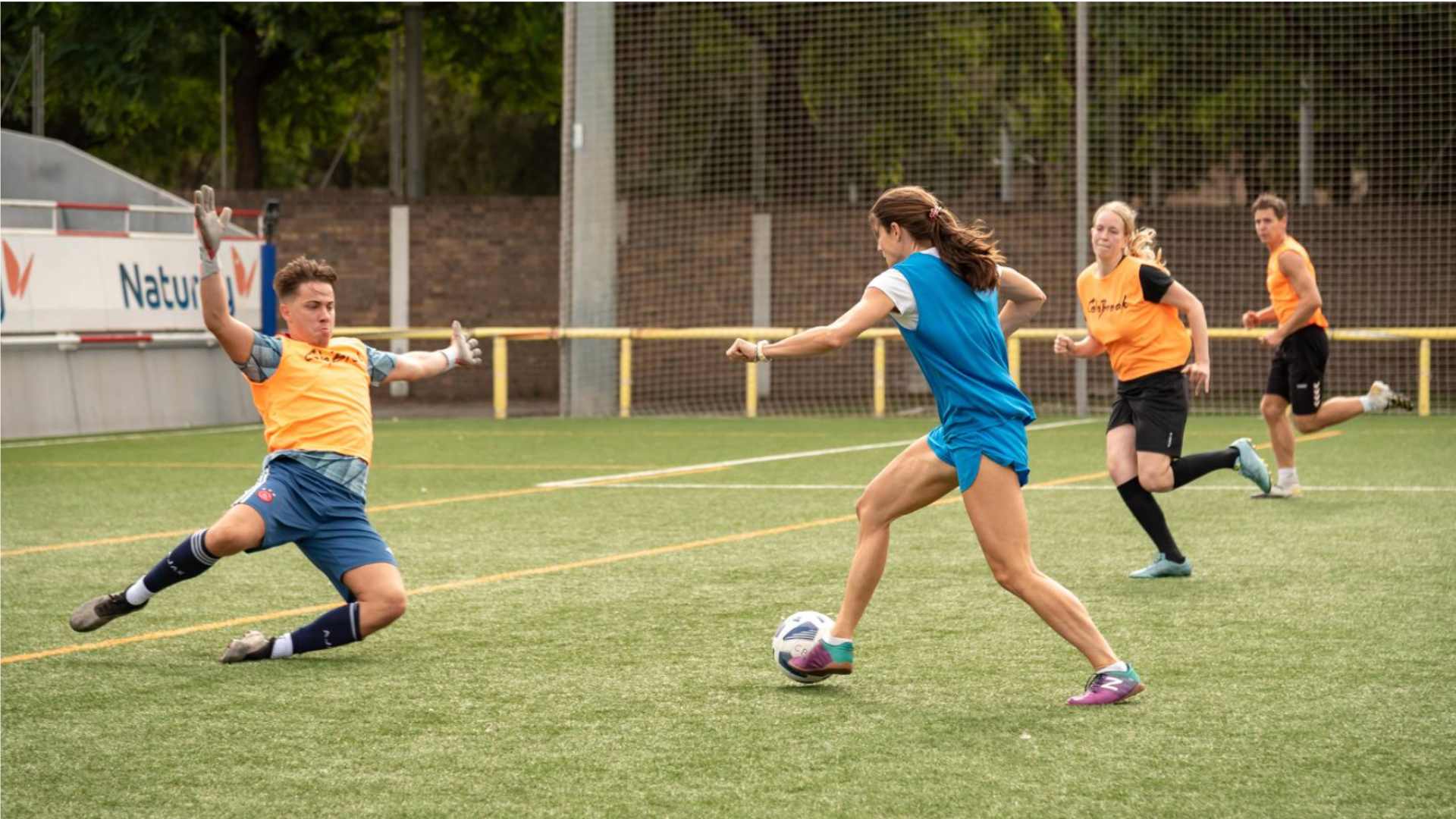Women’s football has proven its ability to inspire and empower women and break barriers and gender stereotypes in sports. The women’s soccer categories range from grassroots to professional, providing opportunities for women of all ages and abilities to participate in and enjoy the sport.
Women’s football offers players a wide range of opportunities to develop and showcase their skills.
By supporting and promoting the growth of women’s soccer categories, you contribute to the advancement and equality in the sport, creating opportunities for women to showcase their talent and passion for the game.
Why are women’s soccer categories important?
The existence of categories in women’s football is of vital importance for several reasons:
The categories allow a progressive development of the soccer skills of the players.
In addition, they help to overcome gender stereotypes and barriers since girls and young people have a dedicated space where they can develop their passion for sport without feeling excluded or limited by previously established norms.
In the case of age categories, these ensure that players compete on a level playing field, as they are up against opponents of the same age group and skill level.
They are taught ball handling, passing technique, team play, and other fundamental skills starting from the earliest stages.
Tactics and strategy are introduced in the higher categories, and technical skills are honed.
This gives the players a solid foundation for their growth and continuous improvement in the sport.
The categories in women’s football make identifying and developing talent easy.
As the players progress through the different stages, coaches and scouts can observe their progress and evaluate their performance.
This way, selecting the most outstanding players for representative teams at a regional, national, and even international level is possible.
The professional-level categories provide an organized and competitive structure in which players can develop their sports careers, gain recognition and generate income.
In addition, establishing professional leagues and competitions encourages media interest and investment in women’s football, contributing to its professionalization and increased visibility worldwide.
Women’s soccer categories
Women’s football is divided into different categories at the national and international levels.
Here are some of the more common categories:
Children’s and youth categories: The journey into the world of women’s soccer begins in these categories, which welcome the youngest soccer players.
This includes players between 6 and 18, often divided into prebenjamín, benjamín, alevín, infantile, cadet, and juvenile.
At these levels, the priority is to learn, improve and, of course, have fun.
College leagues: In some countries, especially the United States, college women’s soccer is essential.
Universities compete in their leagues and tournaments, such as the National Collegiate Athletic Association (NCAA) in the United States.
National Leagues: Besides professional leagues, many countries have national women’s soccer leagues at lower levels.
These leagues are usually organized into different divisions or categories, depending on the competition system of each country.
Professional leagues: In several countries, professional associations are dedicated exclusively to women’s soccer.
Some of the most prominent leagues are the National Women’s Soccer League (NWSL) in the United States, the Women’s Super League (WSL) in England, the Primera División Femenina in Spain, Division 1 Féminine in France and the Bundesliga Femenina in Germany.
National teams: Women’s soccer has national teams representing each country competing in international tournaments, such as the Women’s World Cup, the Olympic Games, and continental championships, such as the Women’s Euro Cup.
The women’s football categories and the structure of the competitions
The women’s football categories are consistent with the general structure of sports competitions.
As you progress, the level of competition intensifies, and the matches become more structured.
You may start playing in local and regional leagues and, over time, work your way up to compete at the highest levels, such as the Iberdrola Women’s League or the Women’s Super League.
In these competitions, teams often play each other in home-and-away matches throughout the season, with the team accumulating the most points and becoming the league champion.
There are also direct elimination tournaments, such as the Copa de la Reina in Spain or the FA Women’s Cup in England, where teams compete in knockout rounds until there is only one winner.
Frequent questions
When can players compete in professional categories?
Players can compete in professional categories once they have demonstrated their talent and skills in grassroots types and have been selected by teams from national or international leagues.
What options exist for players not looking for such a high level of competition?
There are amateur and recreational soccer options, such as amateur leagues and tournaments, and recreational and amateur soccer, where you can enjoy the game in a friendly and fun environment.
How are the players selected for the representative teams in the upper categories?
Players are selected for representative teams through evaluations by coaches and scouts. These evaluations consider the performance and progression of the players in the above categories, as well as their ability and potential to compete at a higher level.
Conclusion
At the end of the road, it becomes clear that the categories of women’s football are broad and diverse, reflecting the different stages of development and competition in the sport.
From the early days in the youth and youth categories to the challenges and victories in professional soccer and national teams, each stage has its significance and set of challenges.
Women’s football has experienced significant growth in recent decades, with greater visibility and recognition of the quality of the game.
The categories outlined here reflect this evolution and allow players to showcase their talent and skills at different levels of play.
Now that you know a little more about the categories of women’s soccer, you’ll be better prepared to follow and appreciate this exciting sport.
CeleBreak is also women’s soccer.
When you download the CeleBreak App and register, you can access the different friendly matches organized throughout the day.
Through the application, you can choose the time and place best suits you and your favorite modality, whether women’s or men’s or fun mixed football.
At CeleBreak, soccer is played on fields with natural or synthetic grass and in closed gyms.
You can play alone or in the company of friends and co-workers.
You don’t need to worry about anything; the CeleBreak organizer brings the bibs and balls to give you the best experience.
Download and play!



